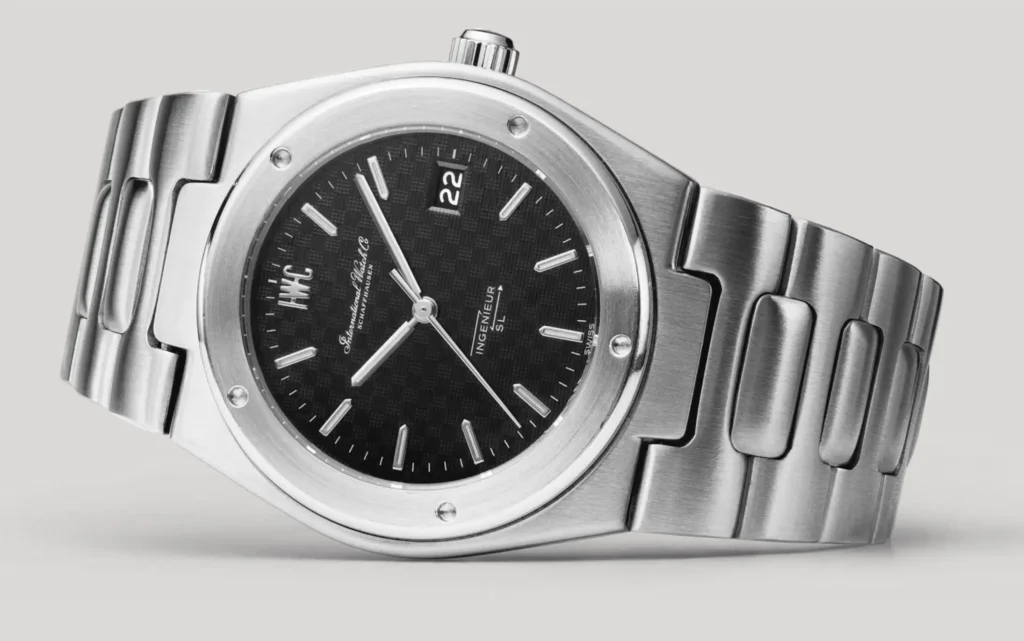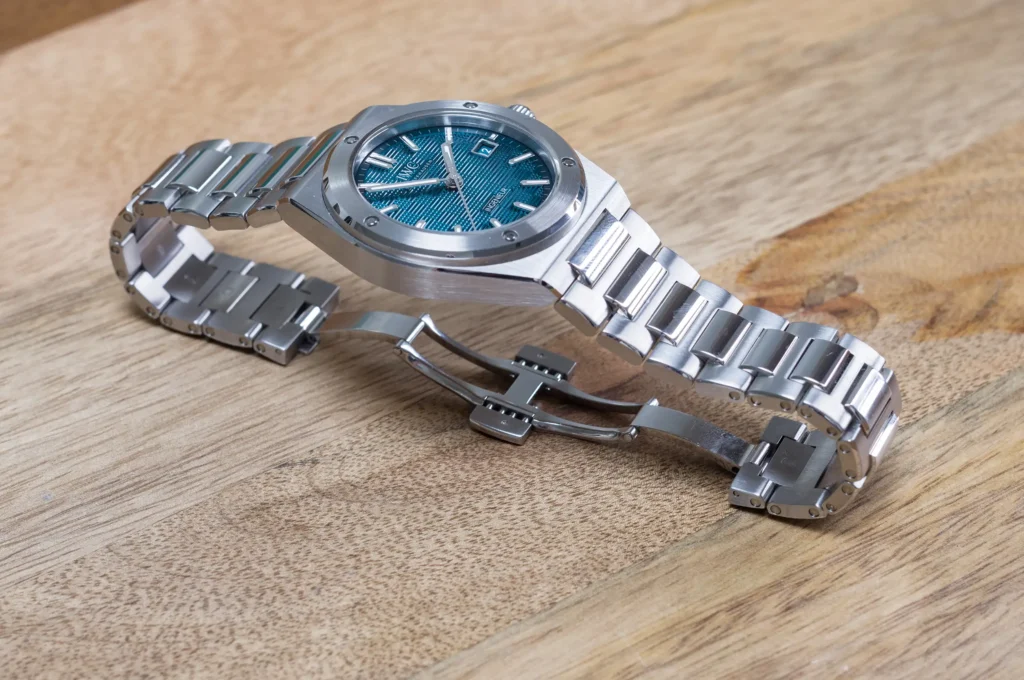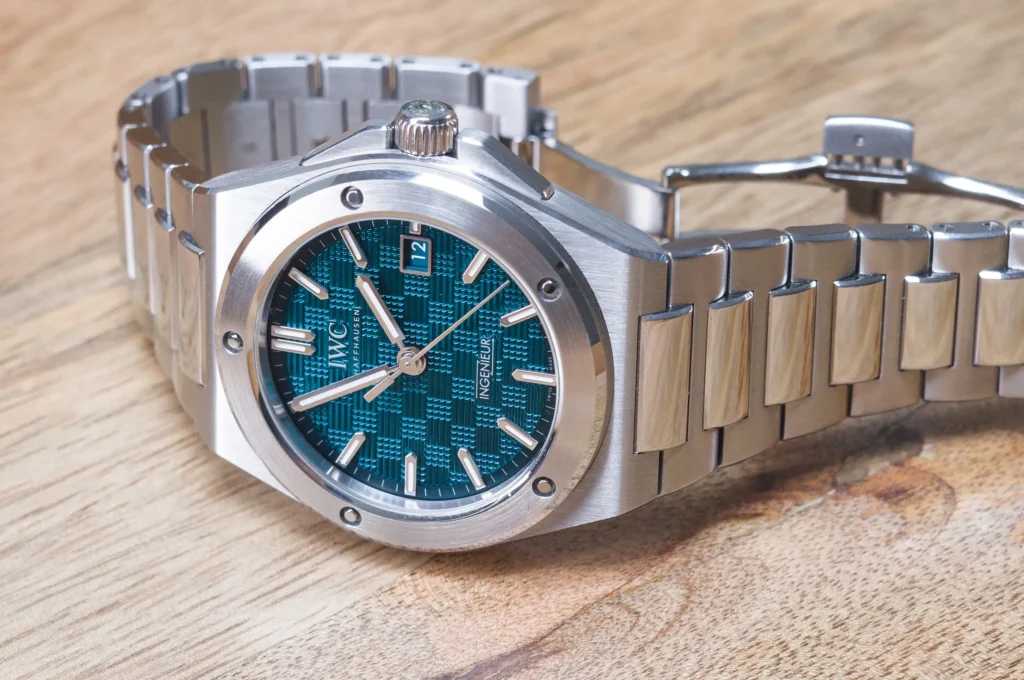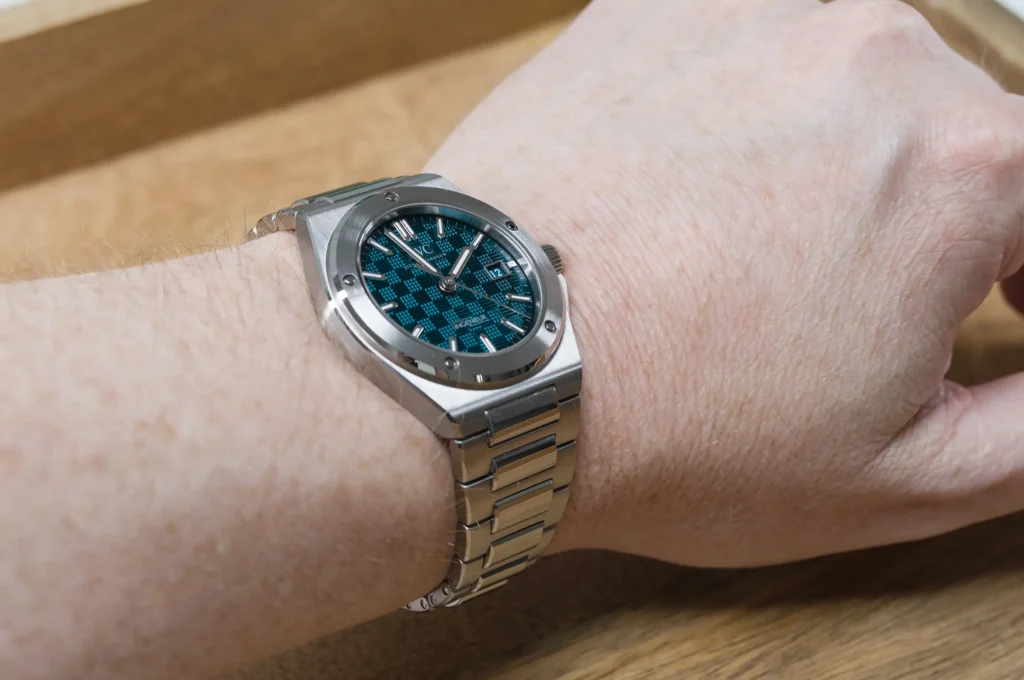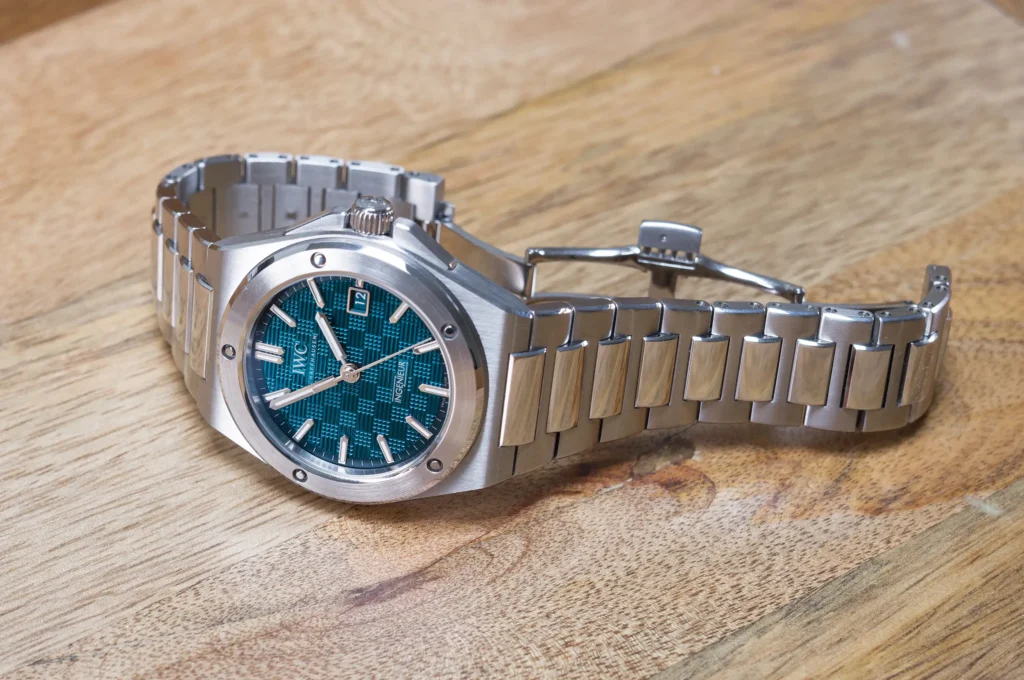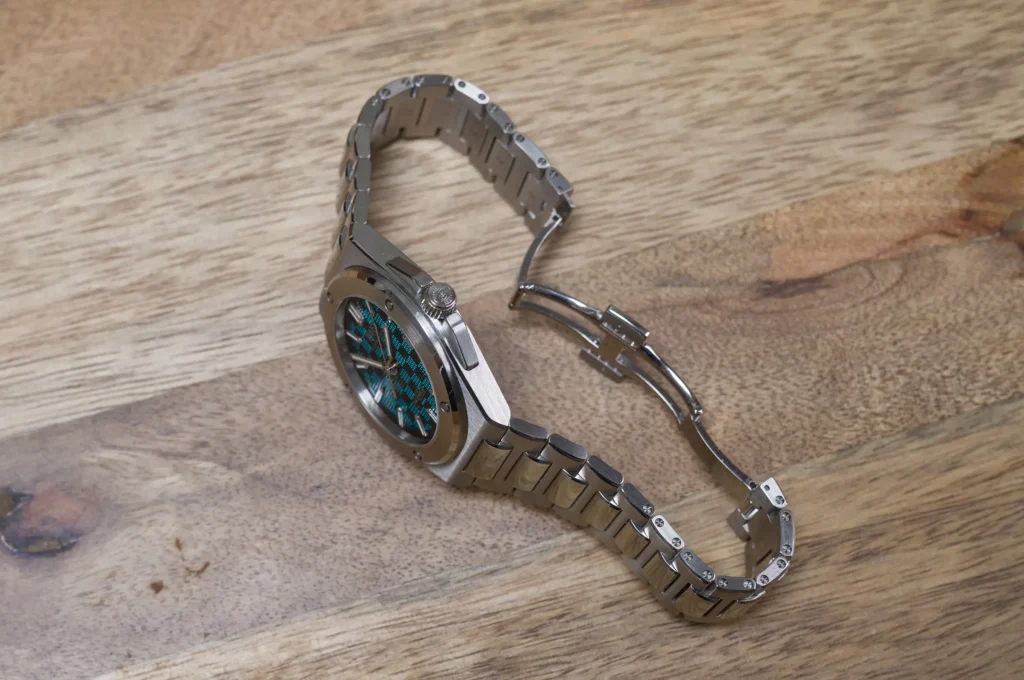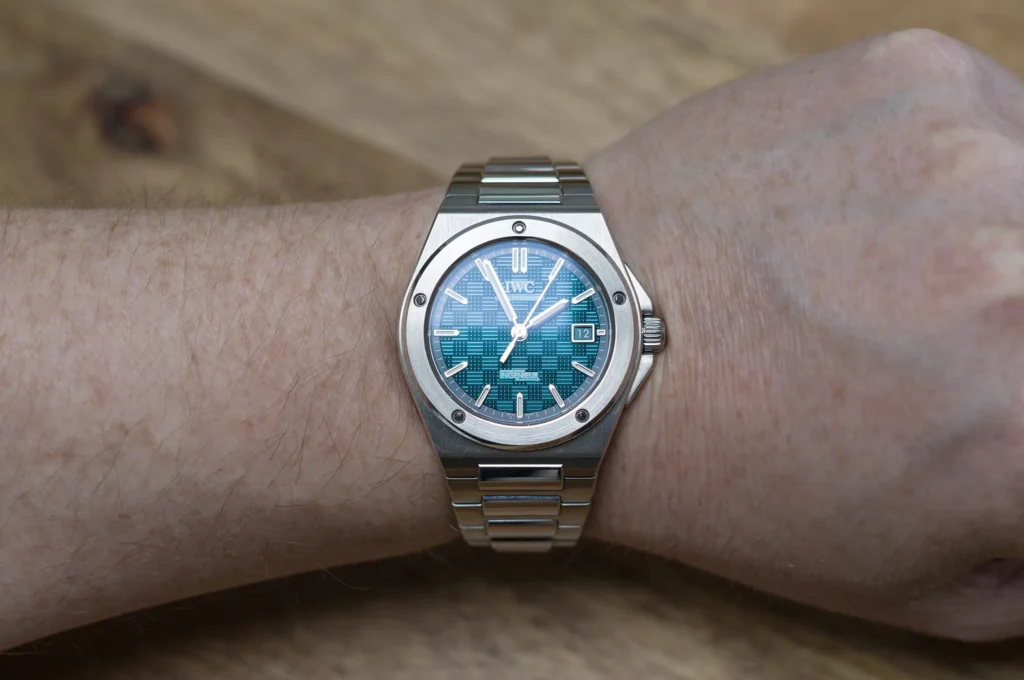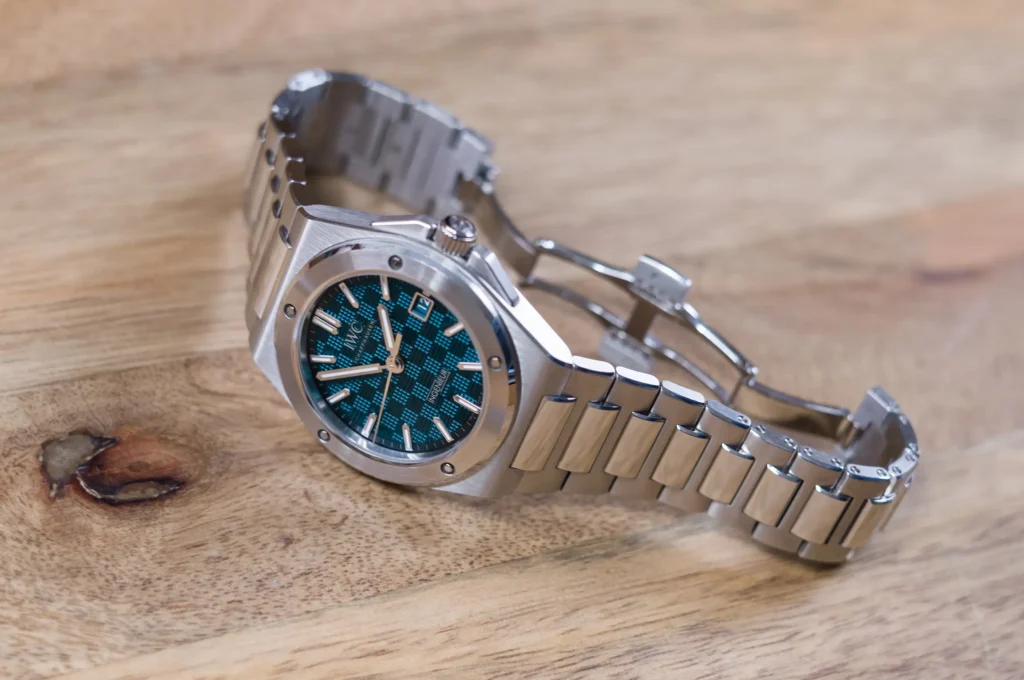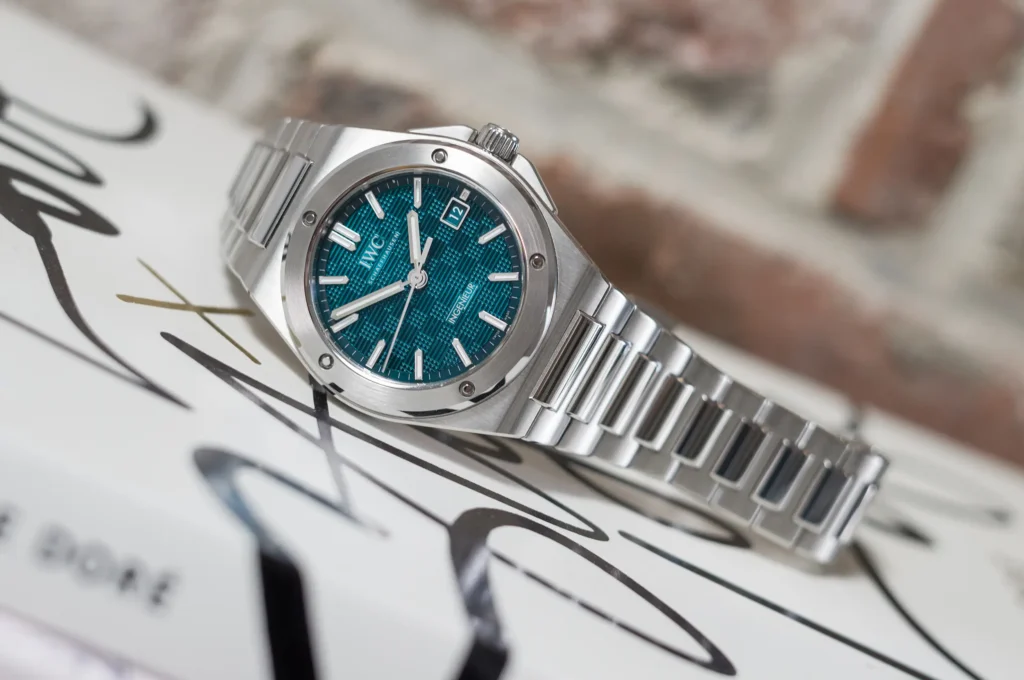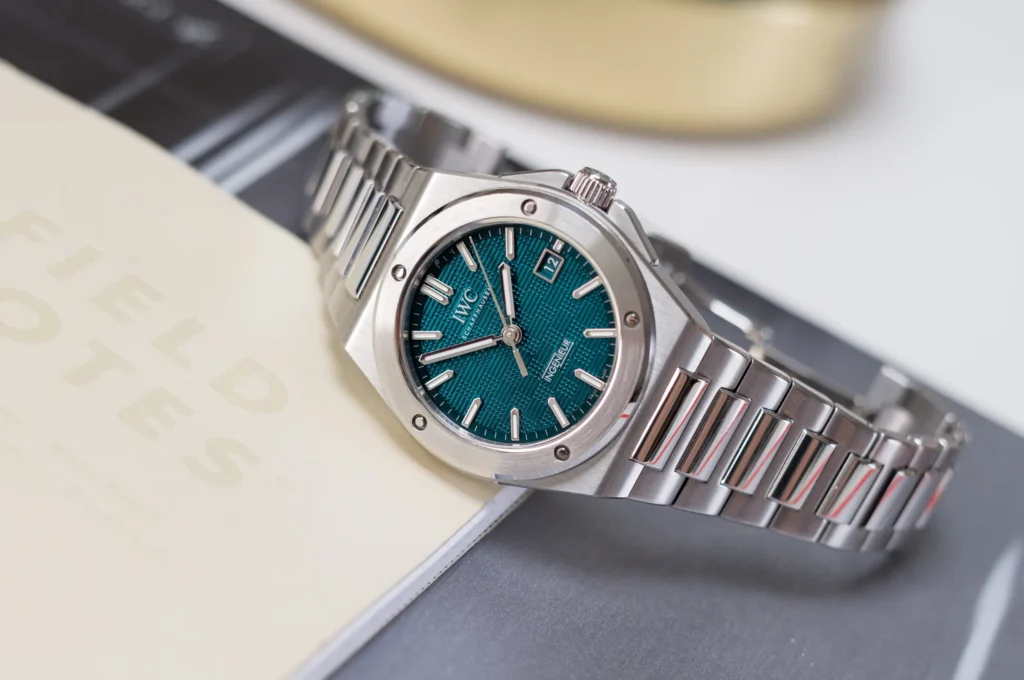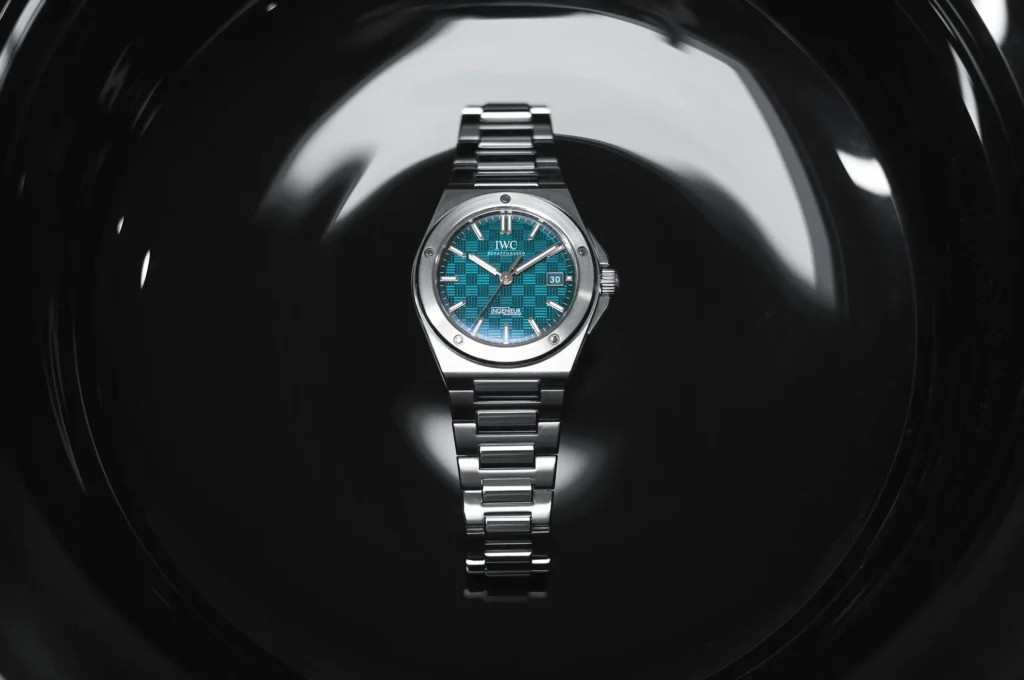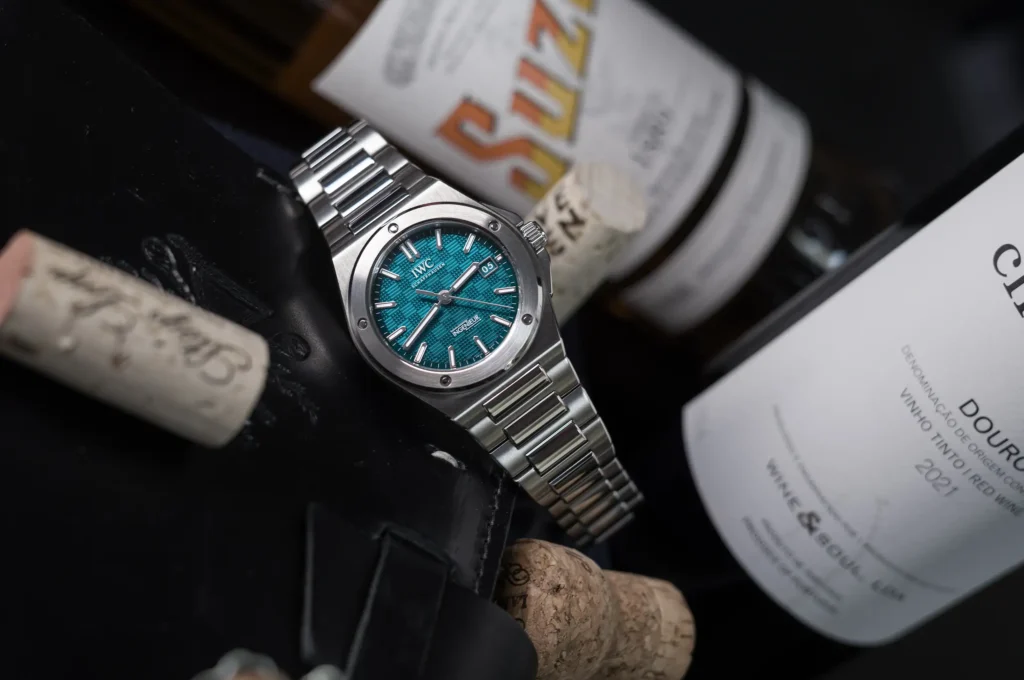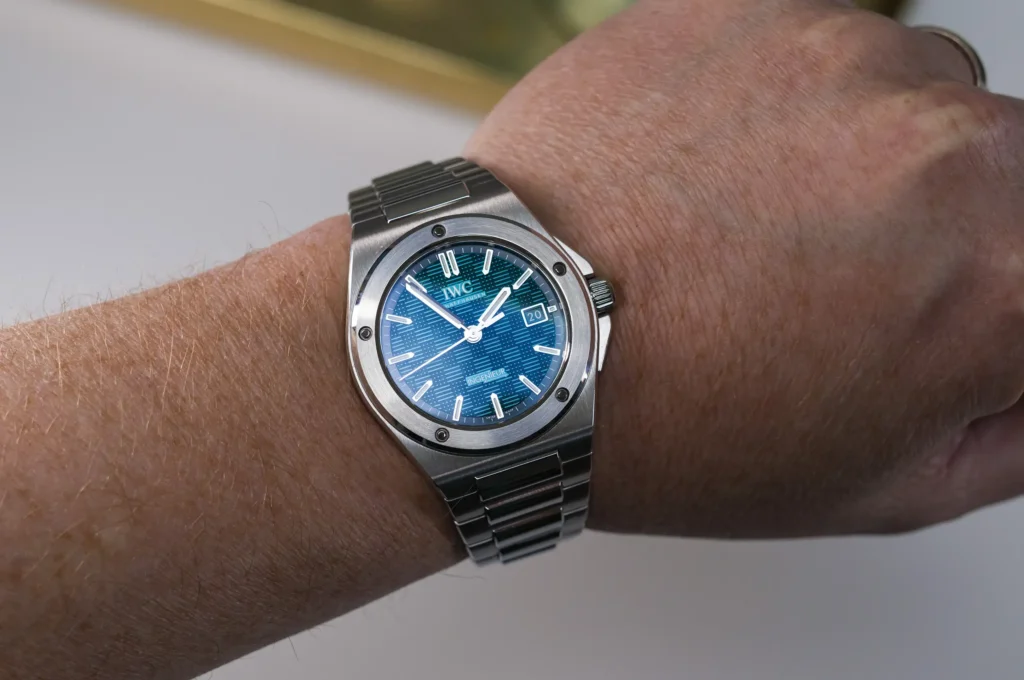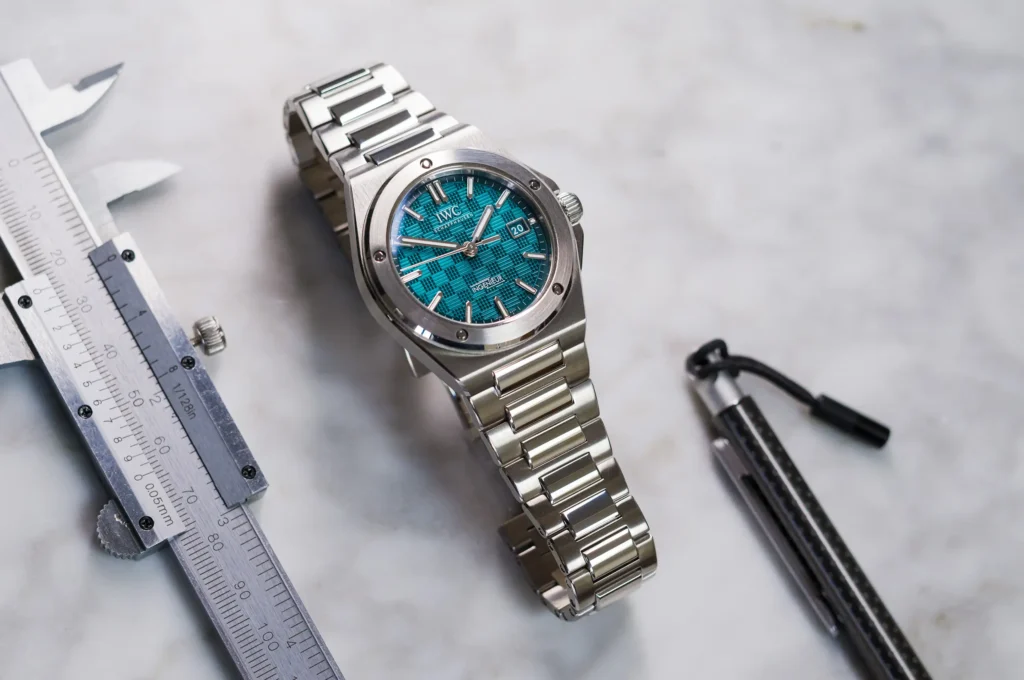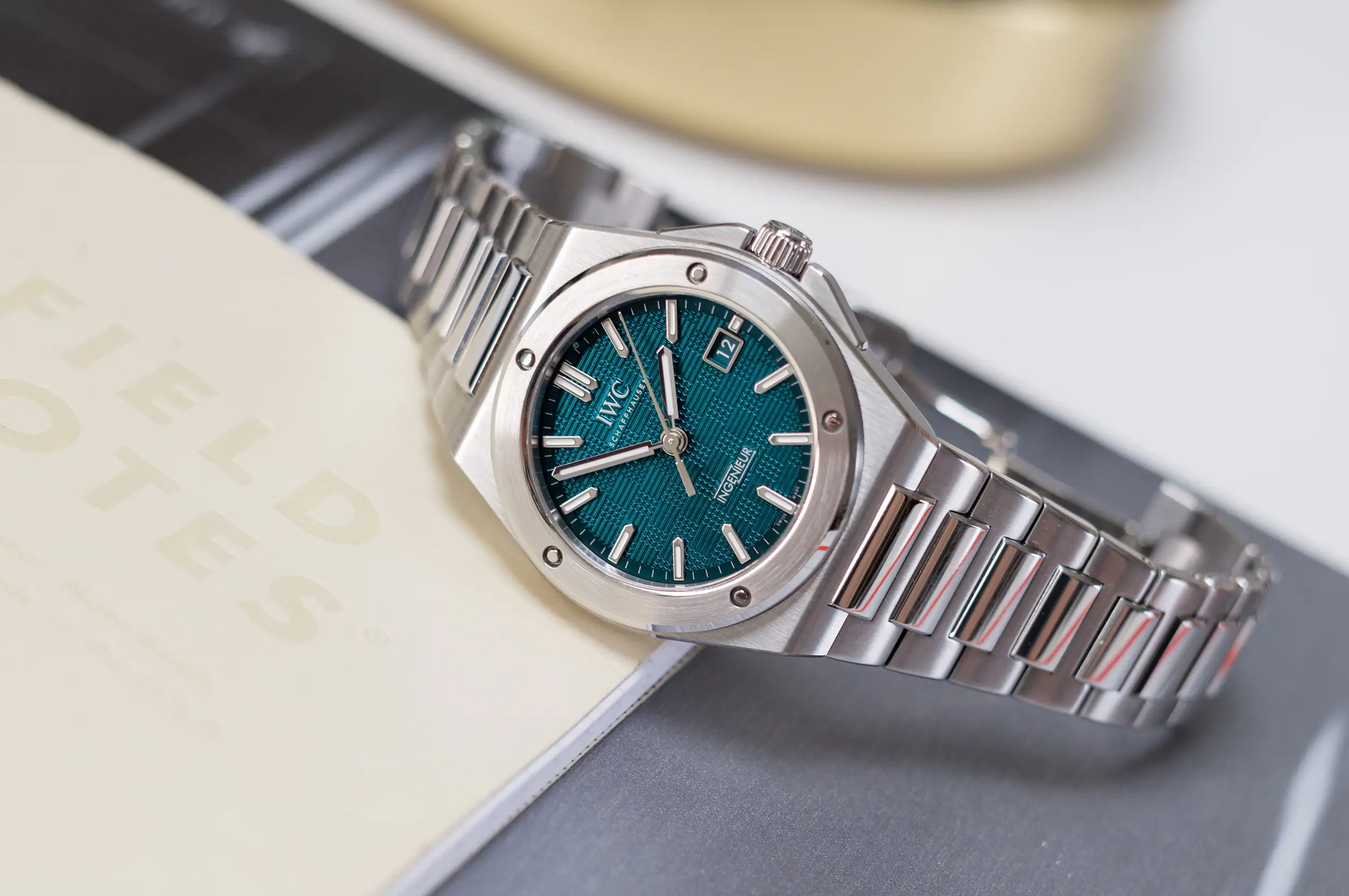Back in 2020, with much of the world in lockdown, the watch industry was entering something of a supercharged state. Hype was building to an all-time high, and a certain era of retro styled integrated bracelet sports watches were leading the charge. Brands with anything resembling an integrated sports watch in their back catalog rushed to bring them back, and many that didn’t would proceed to spin them up on the fly. All harken back to a trio of watches designed by Gerald Genta in the ‘70s: the Audemars Piguet Royal Oak in 1972; the Patek Philippe Nautilus in 1976; and the IWC Ingenieur, also in 1976.
While the AP and the Patek have enjoyed relative consistency since their inception, the Ingenieur is another story. The Genta design from 1976 was not the first Ingenieur, but rather something of a reboot from the original which was launched in 1955. As a result, the Ingenieur has navigated a dual identity over the decades, at times struggling to find clarity. The Genta design roots were influential to the modern identity of the Ingenieur, until 2017, when IWC would introduce a new generation of the collection that took the design back to its 1950’s roots with a classic round case and simple, straightforward dial. Fast forward to 2021 while interviewing IWC CEO Chris Grainger, I asked him if IWC had any plans to bring back the Genta era Ingenieur design, given the trend’s surge in popularity. His answer: “This is what keeps me up at night.”
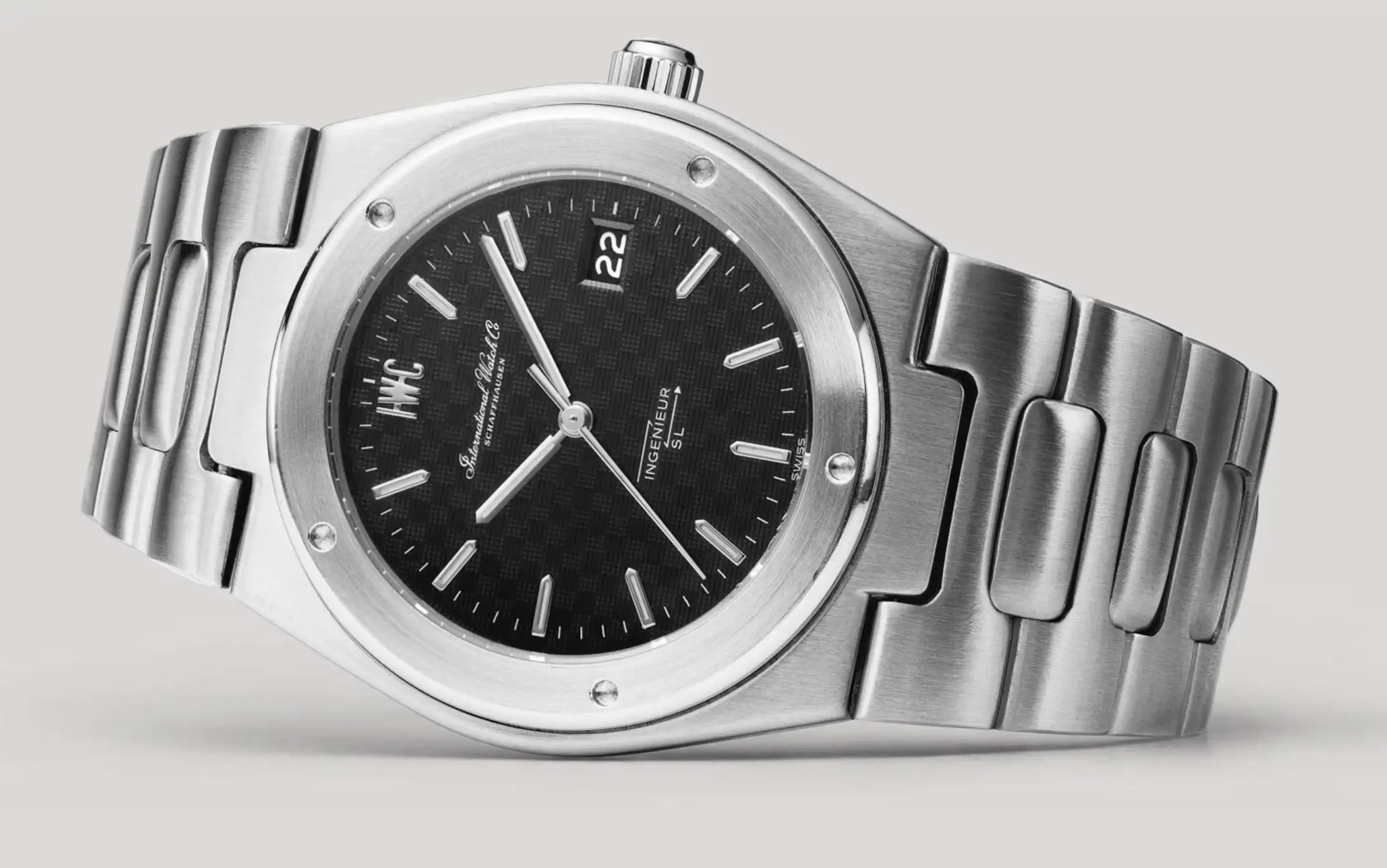
Finally, in 2023 IWC released a new Ingenieur reference 3289, featuring a modern take on Genta’s 1976 design. It wasn’t a throwback or re-issue, this was a novel take on his integrated bracelet design looking to set a new foundation for the collection. This is meant to be the watch that removes any ambiguity about the identity of the Ingenieur. Whether or not the watch is a success in that regard will depend on where the brand goes with it from here. But, the 3289 is a very good start. Let’s take a look at why.
First and foremost, I think IWC deserves some credit for not rushing out an undercooked integrated design to take advantage of the warming trend. The watch released in 2023 may have come a year or two after peak Genta craze, but the result is clearly well considered, and in time will be remembered for its execution rather than for when it was released.
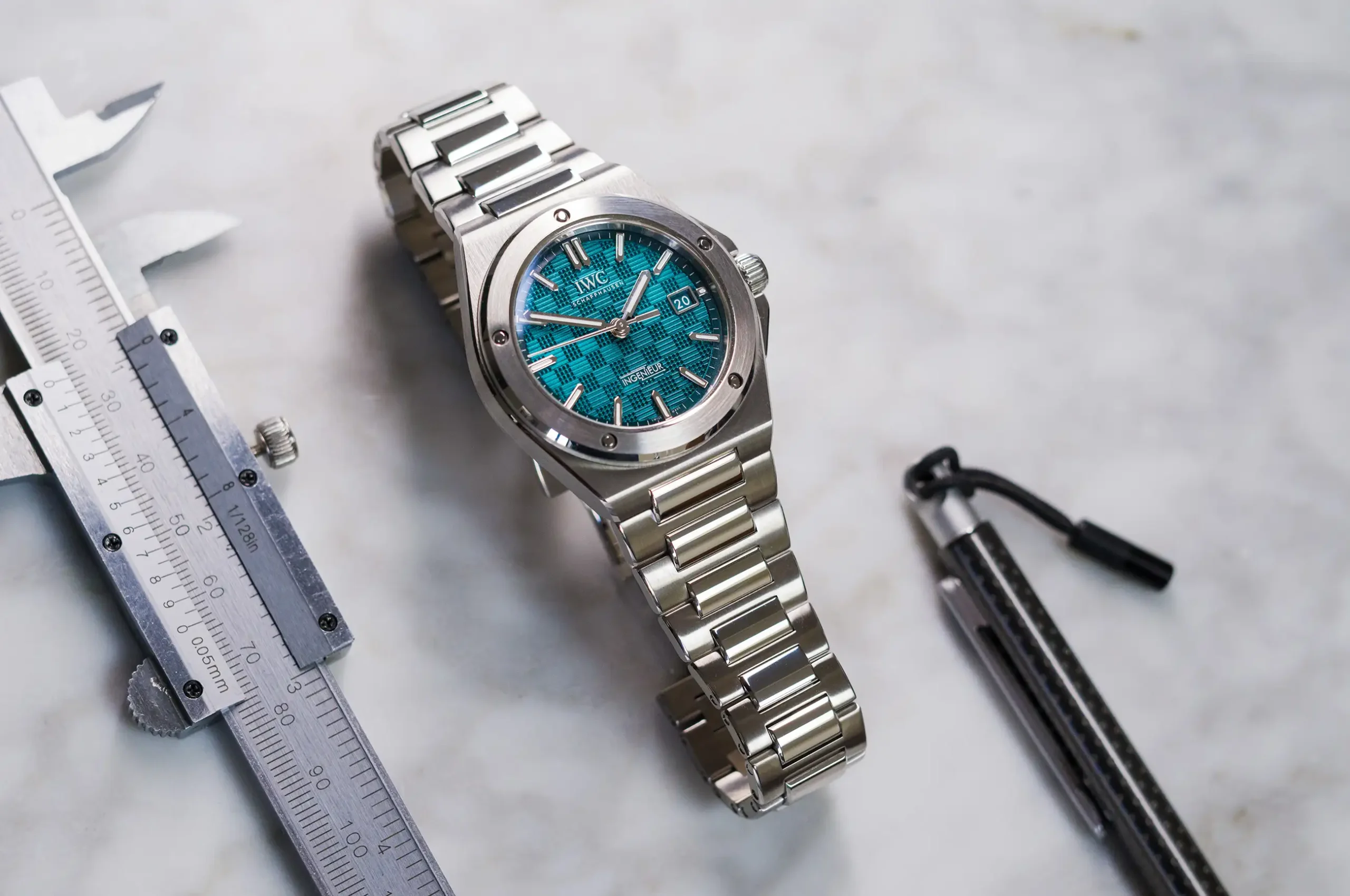
The new Ingenieur collection was launched with four references: three in steel, and one in titanium. Each utilizes a 40mm case with integrated bracelet and in-group 32111 automatic movement hidden behind a closed caseback. Between a set of calipers, the case is actually a hair under 40mm, not accounting for the crown guards, while the distance between the top and bottom tips of the case is 46mm, though measuring from the bend in the case nets 42mm. Finally, the total case thickness is 10.8mm, which may be the most surprising of the measurements.
This is not a traditional case design, so those numbers don’t quite paint the full picture, but they should clue you into the fact that this watch is quite pleasant on the wrist. Factoring in the shape of the case, construction of the bracelet, and how it integrates into the case and you’ll find a watch that is downright exceptional on the wrist in practice. One of the unsung heroes in that equation is the taper of the case and bracelet. With an integrated design like this there is no lug to help with the transition from case to bracelet, making the case taper all the more important so as not to come off wearing like a cuff. IWC has walked this line quite effectively with the new Inge.
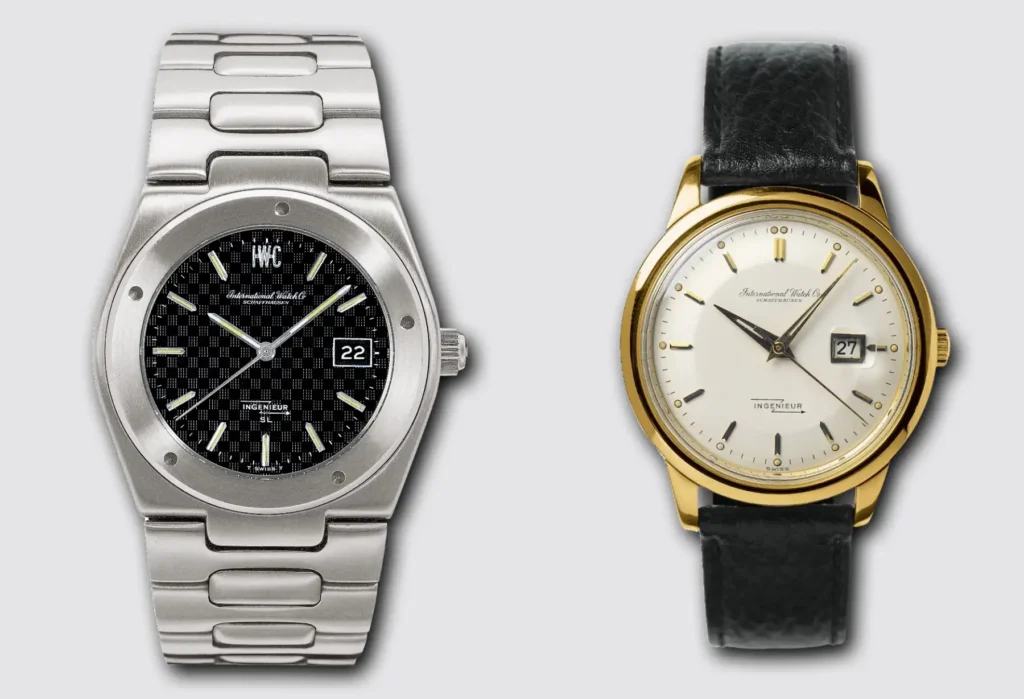
While enthusiasts waited for a new Ingenieur, many wondered just how closely it would stick to the SL formula, and where it might deviate. To this end, there are 4 key differences worth noting, some small and inconsequential, others crucial in making this watch a success. Particularly when factoring in the somewhat surprising price tag that this watch was given (more on that later). In short, this is not meant to be a resurrection of the SL reference 1832, but rather a modern interpretation upon which it is based.
Let’s start with the small stuff. The nerdy stuff. It doesn’t really matter, but then again, maybe it does to some of us. The smallest departure is the orientation and implementation of the port-hole bezel structure. It retains the 5 holes that were once securing points to screw this piece in, however they are now set into a symmetrical pattern thanks to the use of bolts that have been placed in them, which affix this component to the case. It’s not something you’ll notice straight away, but it does bring a level of consistency to the watch. Additionally, the heads of those bolts inside of the 5 recesses are polished, bringing a slightly different aesthetic to the bezel as a whole in the process.
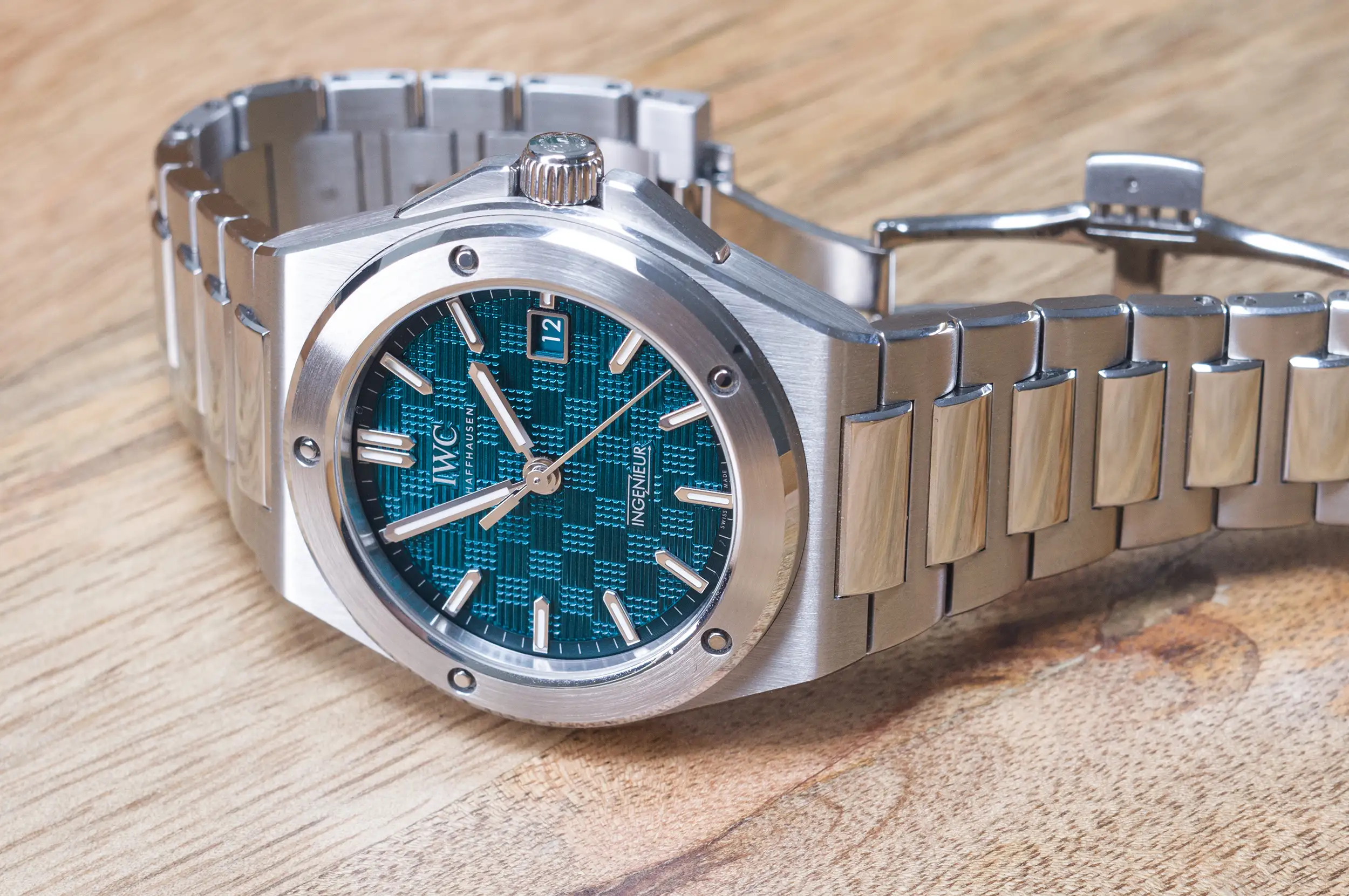
Next is the application of a crown guard, which was notably absent on the SL. This may be the single feature that gives this watch a distinct modern vibe at a glance, as it fills out the shape visually in an entirely different manner than a sole crown hanging off the 3 o’clock side of the case. This is also the feature that will get under the skin of the purists out there. I do think that this design would have worked equally well sans the crown guard, but its inclusion here doesn’t feel out of place given that the other departures from the original.
Next is arguably the most prominent feature of the new Ingenieur, and that is its dial texture. IWC calls it a grid pattern, but it feels more complicated than that. It is a direct reference to the pattern that appeared on the SL, but slightly revised, and far more dramatic. The SL had a subtle basket weave style pattern creating a series of boxes on the dial, and the new Ingenieur retains this in spirit, but has cranked the dial up to 11.
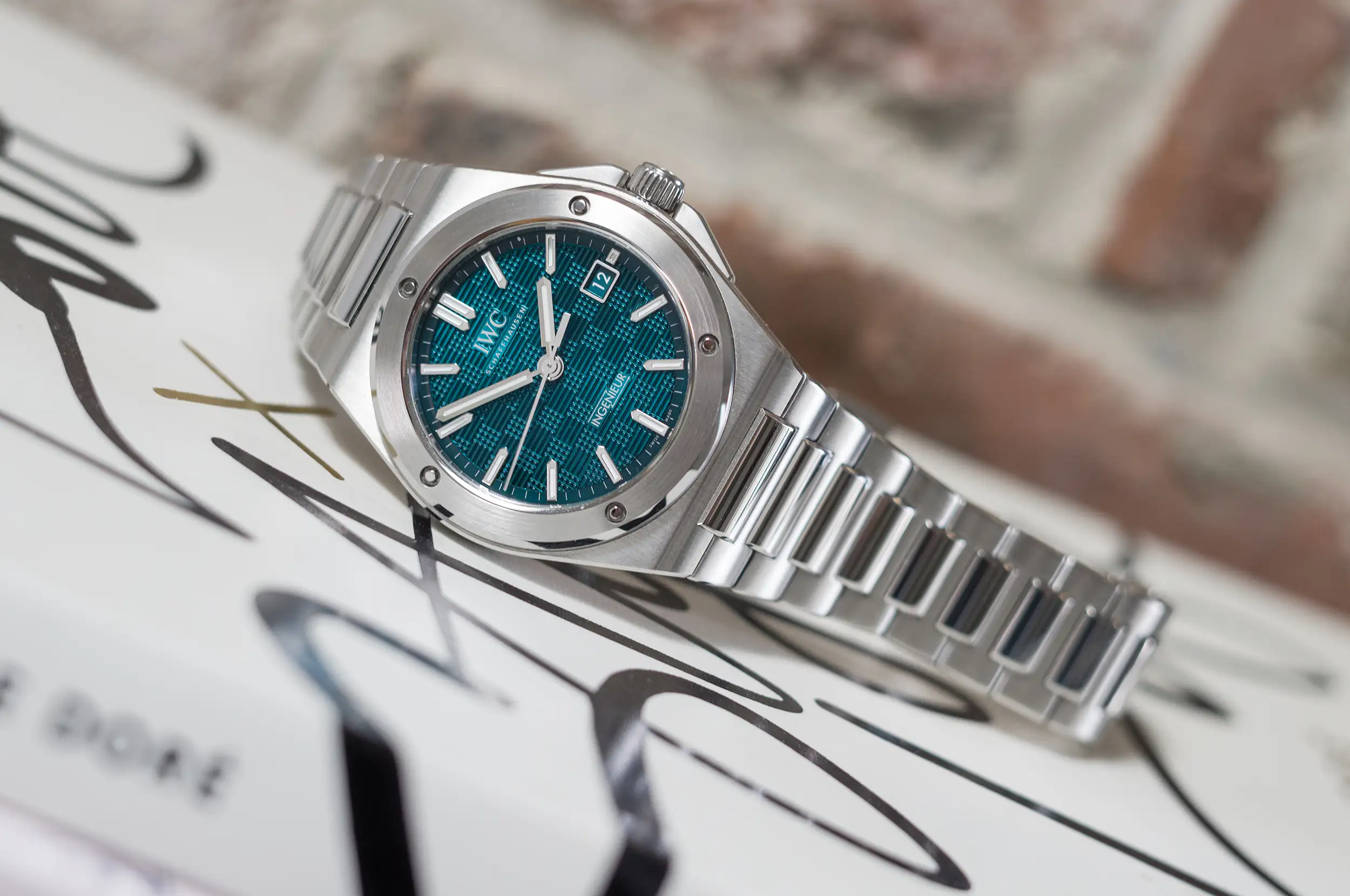
Boxes containing horizontal lines sit next to boxes containing square dots, and crucially, they are done in high relief creating a highly dynamic dial at nearly every angle, and every light situation. This aqua dial example is the most extreme of the 4 new Inge references, taking on new hues and even appearing iridescent at times depending on your environment and viewing angle. It can transition from soft green/teal to dark rich blue in a moment, with the pattern catching light and shadows along the way.
While we’re on the dial, there are some other departures here as well. The original SL had the IWC branding placed at the top of the dial in lieu of the double bars marking 12 o’clock. This has obviously been ditched with the new reference in favor of their modern logo mark (which is not applied, by the way) and the classic Ingenieur mark at 6 o’clock. The long thin hands remain nearly unchanged, and at a glance the hour hand feels just a smidge too long, but it’s true to the original proportions. Finally, the date window gets a frame around it, a detail I could do without, frankly, but the typeface displaying the date feels unique and modern, like it was designed for this watch. It’s a detail that you’ll appreciate each time you look at the watch.
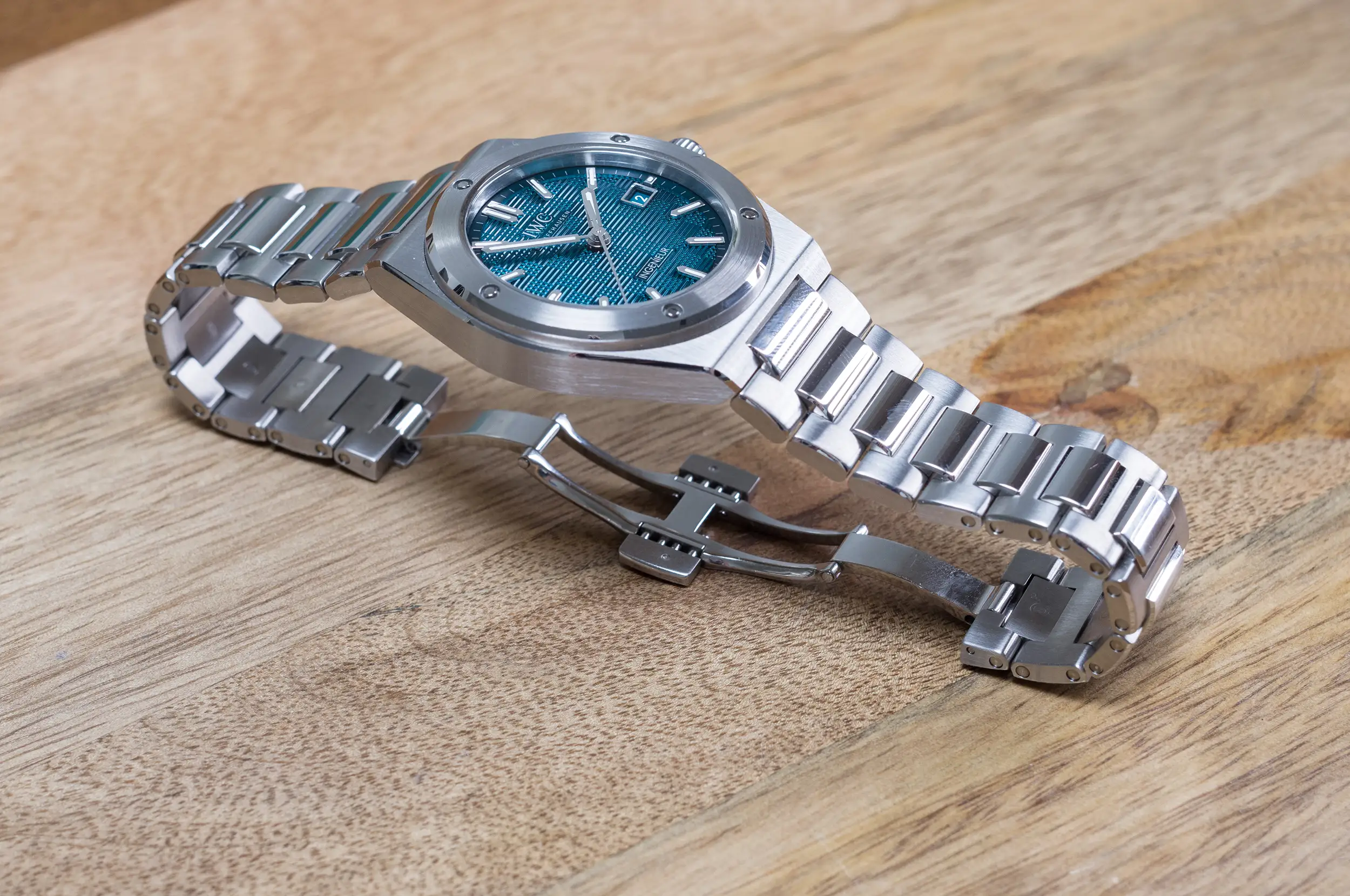
As a whole, the dial is a standout feature of the watch.It pushes the modern vibe and carves out a unique feeling for this watch among the sea of other integrated bracelet sport watches. Further, highly detailed dials are enjoying a moment right now, and this one certainly enters that discussion in its own way. It’s more geometric than organic, but it ties it back to the original while also building relevancy in the current meta.
Finally, the true star of the show here is the bracelet. Going back to the original Genta designed Ingenieur SL from 1967 for a moment, we find an integrated H-link bracelet that connects to a fixed male end of the case, inverse of the design used on the Nautilus of the same year. The new 3289 transitions to a fixed female end of the case into which a central articulating link serves as the first transition element to the bracelet. This allows for a more free flowing experience on the wrist without the stiffness of the added male link on the case.
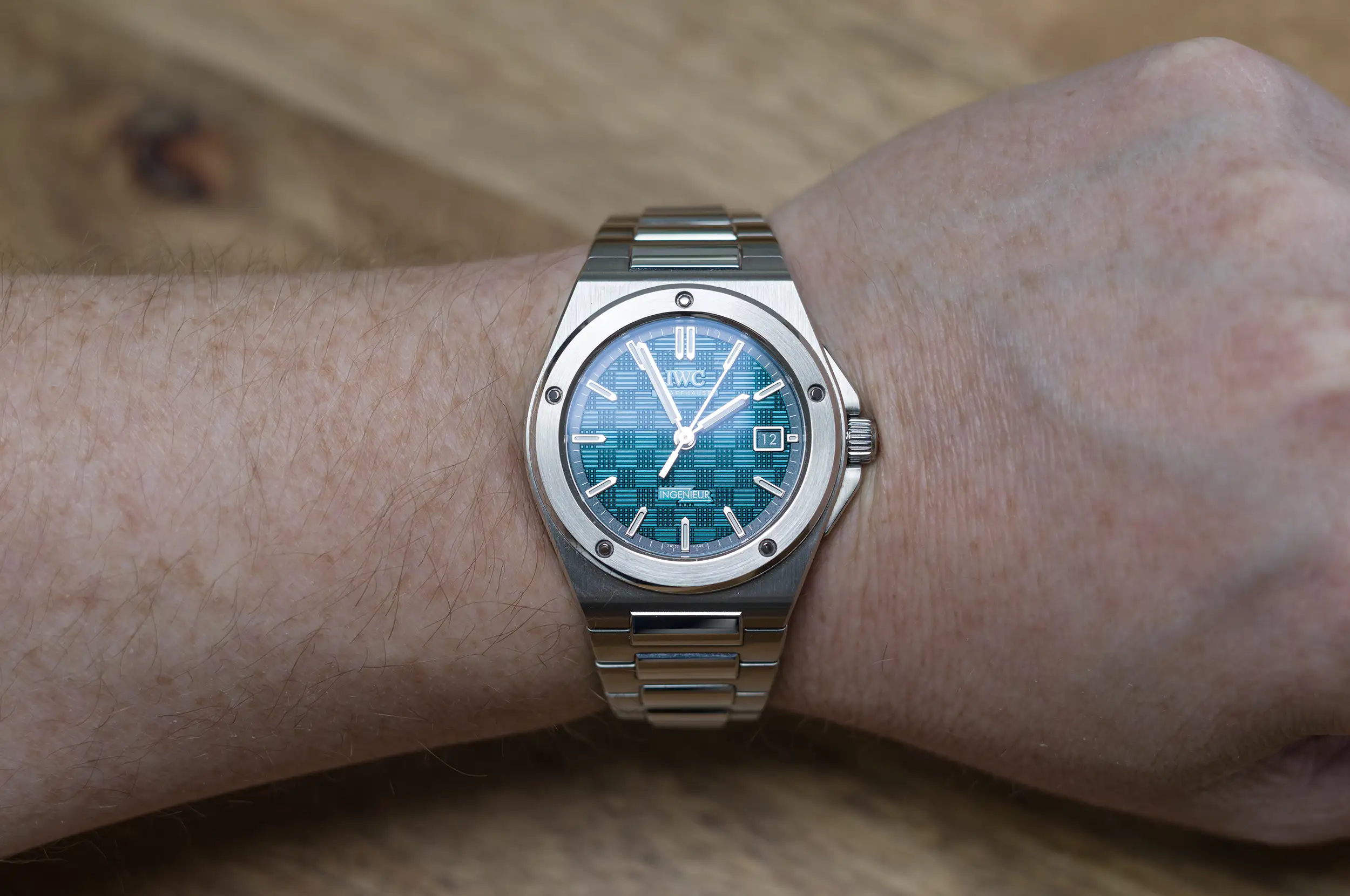
Taking a quick step back, and to play devil’s advocate here a bit, the structure of these three integrated bracelets from AP, Patek, and IWC could have been a very intentional decision to create some distance between themselves. The Royal has a unique integration, the Nautilus has the female integration, and the Inge has the male integration – each resulting in a unique shape that sets one apart from the other. From an ergonomic standpoint, the female integration is the better route, so it makes sense that IWC would make this move at the expense of that shape. I would argue that had they gone without the crown guard, sticking with that original shape may have made more sense, but I’m glad that they decided against it.
The H-links are wide and measure about 7mm in height, connected via central hubs that have 2 pivot points. The construction allows for a high degree of flexibility while providing enough stiffness to keep itself formed around the wrist. The result is a luxurious feeling in use that’s not dissimilar to the modern Nautilus, which is a very good thing. The central link remains a bit wider, staying true to the design of the original, and in the case of the aqua dial seen here, those center links are polished. This is the only colorway to receive this finish.
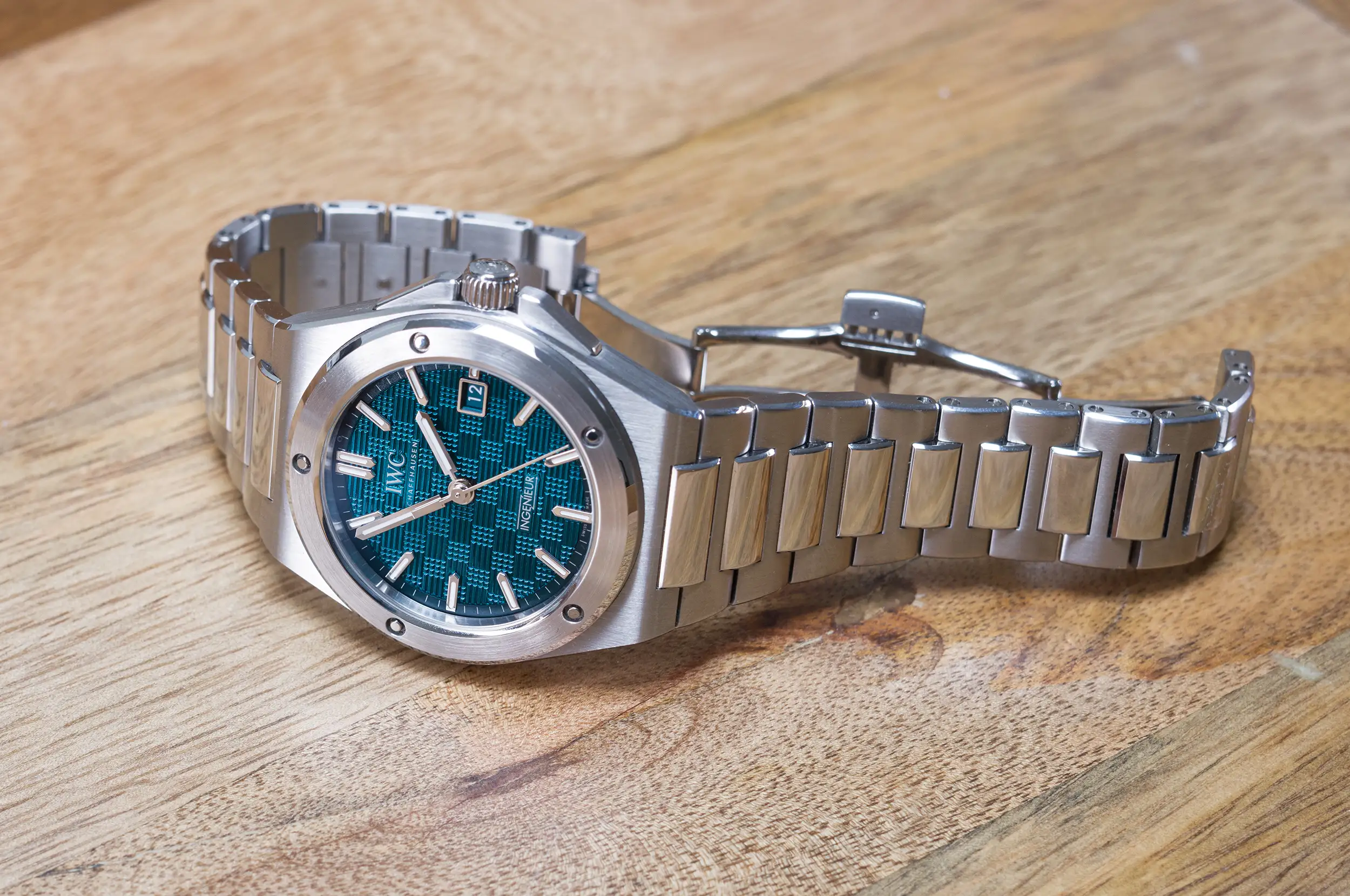
A theme with this watch is the balance it’s managed to strike between representing and respecting the original design and intention, while also making changes where necessary to fit a more modern expression. Again, this doesn’t feel like a throwback, and was never intended to be one. This watch has picked up the throughline that we last saw in the reference 3239 released in 2013. Where the 3239 felt like one of the last vestiges of IWC as a rugged tool watch manufacture, the new 3289 represents the brand’s luxury aspirations quite effectively. It’s clear the two watches share the same DNA, but they feel quite different in execution.
Had IWC simply re-issued the original SL design they would have boxed themselves into a dead end, leaving themselves with nothing to build on. With this modern interpretation they have built a runway to continue iterating, and continue to keep the collection relevant to a new generation of buyers. Another option would have been to release a limited edition re-issue (perhaps in precious metal, ala Piaget Polo 79 and Vacheron 222) that remained true to the original alongside the modern interpretation, but this again would have clouded the identity of a collection that’s still looking to lay its foundations in this era. At the end of the day, the Ingenieur is not the luxury product that the Polo 79 or 222 are, it’s a premium tool watch at its core and keeping the steel case is an acknowledgement of that fact.
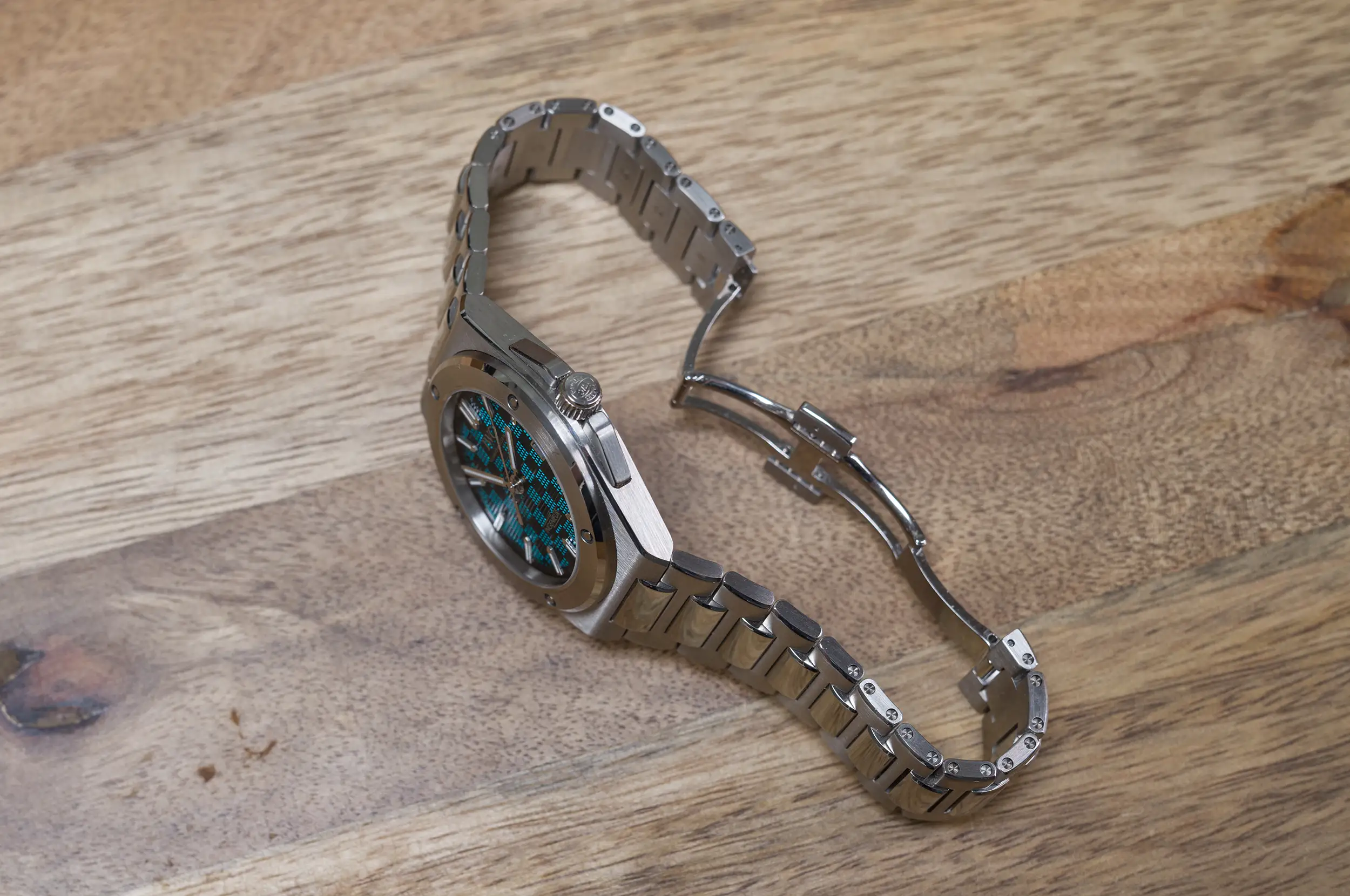
When the Ingenieur reference 3239 was released in 2013, it was priced at $6,600. The price in 2023 dollars, according to the U.S. Bureau of Labor Statistics, is $8,670. The newest Ingenieur seen here in steel is priced at $11,700, a near 30% increase over the previous reference when factoring for inflation. The titanium example is priced at $14,600. This is a premium tool watch in the same vane as the Royal Oak (16202ST MSRP is $35,000), and the Nautilus (5711/1A when it was in production was also ~$35,000), but it’s never quite been viewed in the same league as those two, despite its aspirations. Does the new 3289 change that? The answer is that it’s a start.
In truth, it will take a few generations of consistency (at least) to shift perceptions, with slow and intentional evolution. This is why the Royal Oak, the Nautilus, and the 911 are the icons that they are today. They immediately embraced their identity and more or less stuck with it through shifts in trends and tastes, and came out the other side as the standard bearers of the genre.
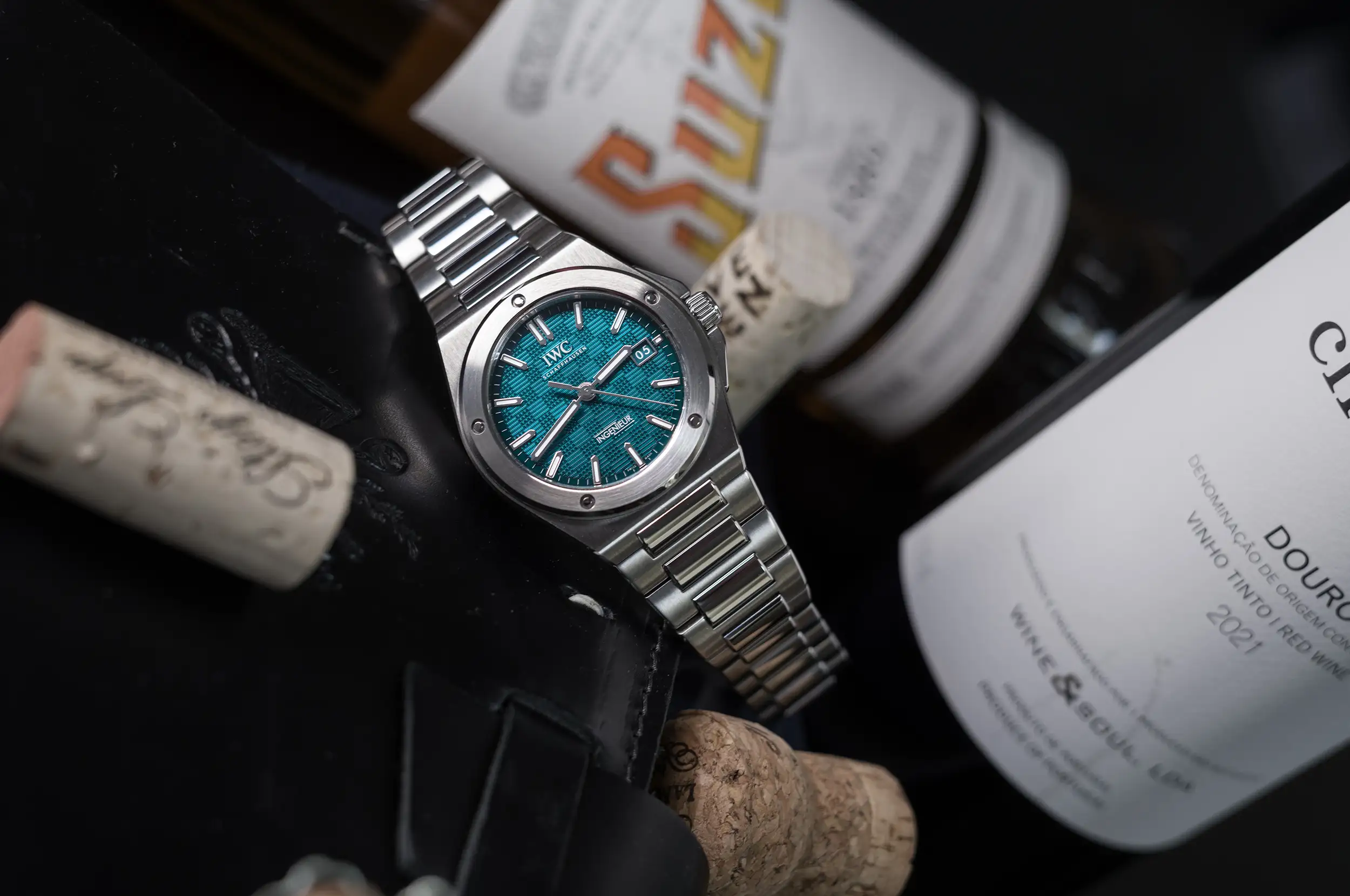
So what about this 3289, does it feel like it’s worth $11,700? No. But it feels very, very close. The struggle with price here is justified, but this feels far more premium than the 3239 ever did (which could be a con for some), and it’s a watch that must be experienced in person to fully appreciate (much the same as the Royal Oak and Nautilus, coincidentally). The 3239 had an ETA movement, and somewhat primitive case and bracelet construction (though it’s an awesome watch in its own right for just these reasons). Conversely, the 3289 here uses the in-group 32111 caliber, but that’s not the main selling point, what you’re paying for here is the case and bracelet, and that’s something you’ll notice every time you put it on.
There are plenty of other interesting watches in this category, such as the Girard-Perregaux Laureato and Chopard Alpine Eagle, among many others, which may offer their own interesting back stories and feature sets, each valid in their own right. This is the crowd of watches that IWC needs to elevate the Ingenieur within. To do so, they need to get more of these watches in the hands on the wrists of customers, the rest will take care of itself, as good things have a way of persevering.
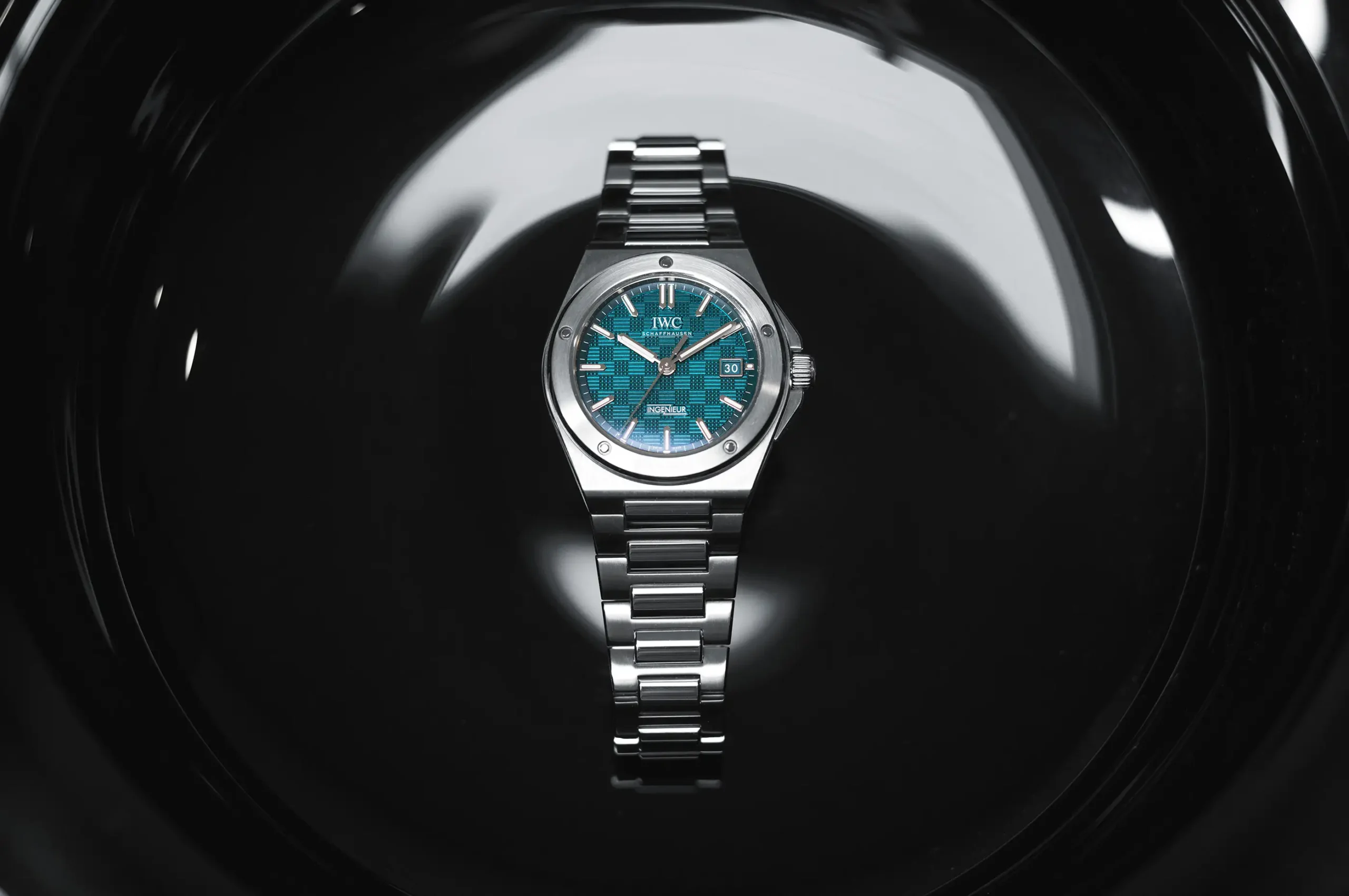
The IWC Ingenieur 3289 is most certainly a good thing. It’s a riskier move than merely re-issuing the original, but it opens the door for a brighter future for the collection. It’s not quite the raw tool watch it once was, but it’s a better watch in every quantifiable way. The only question left is where it will go from here. IWC
